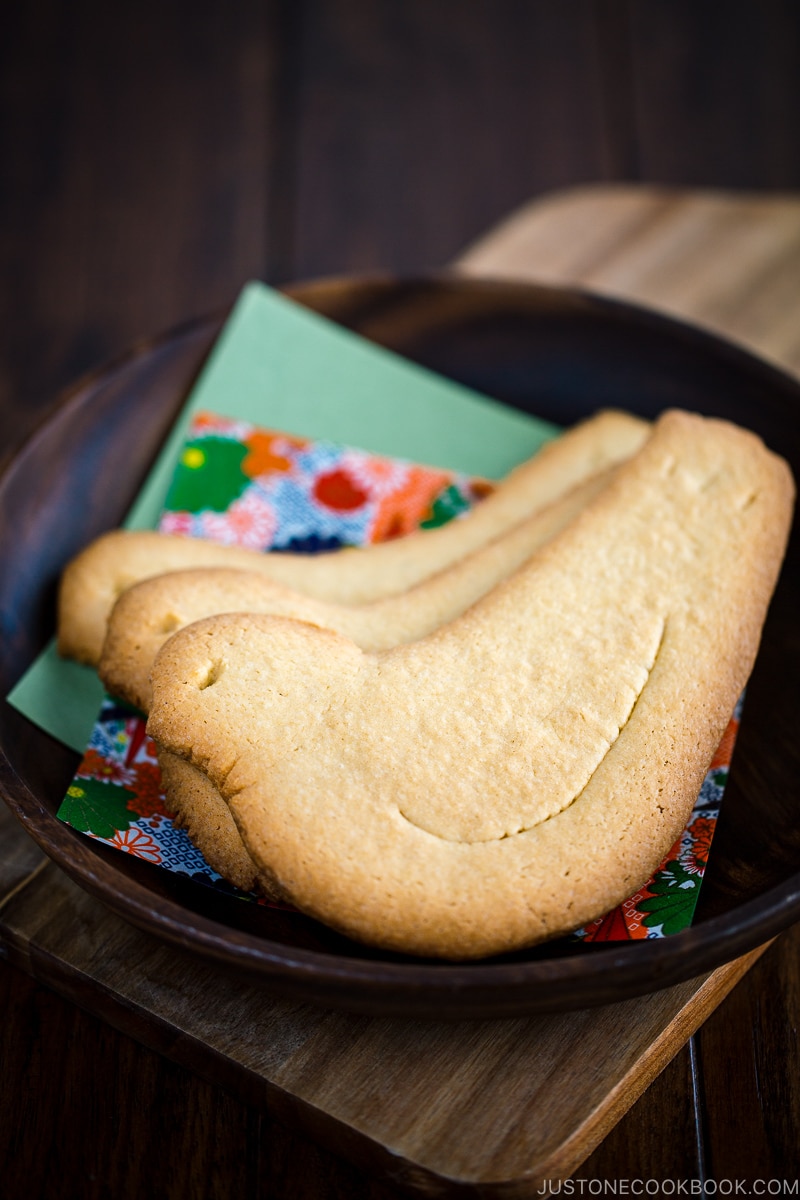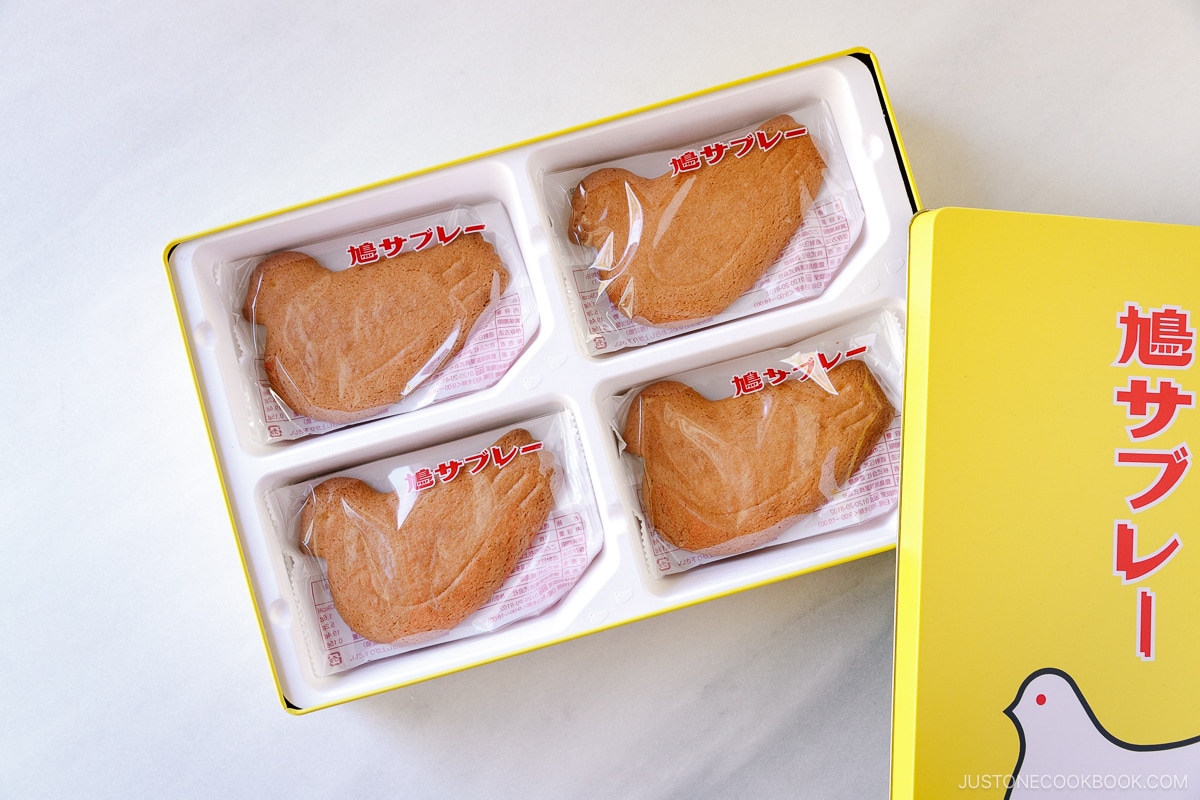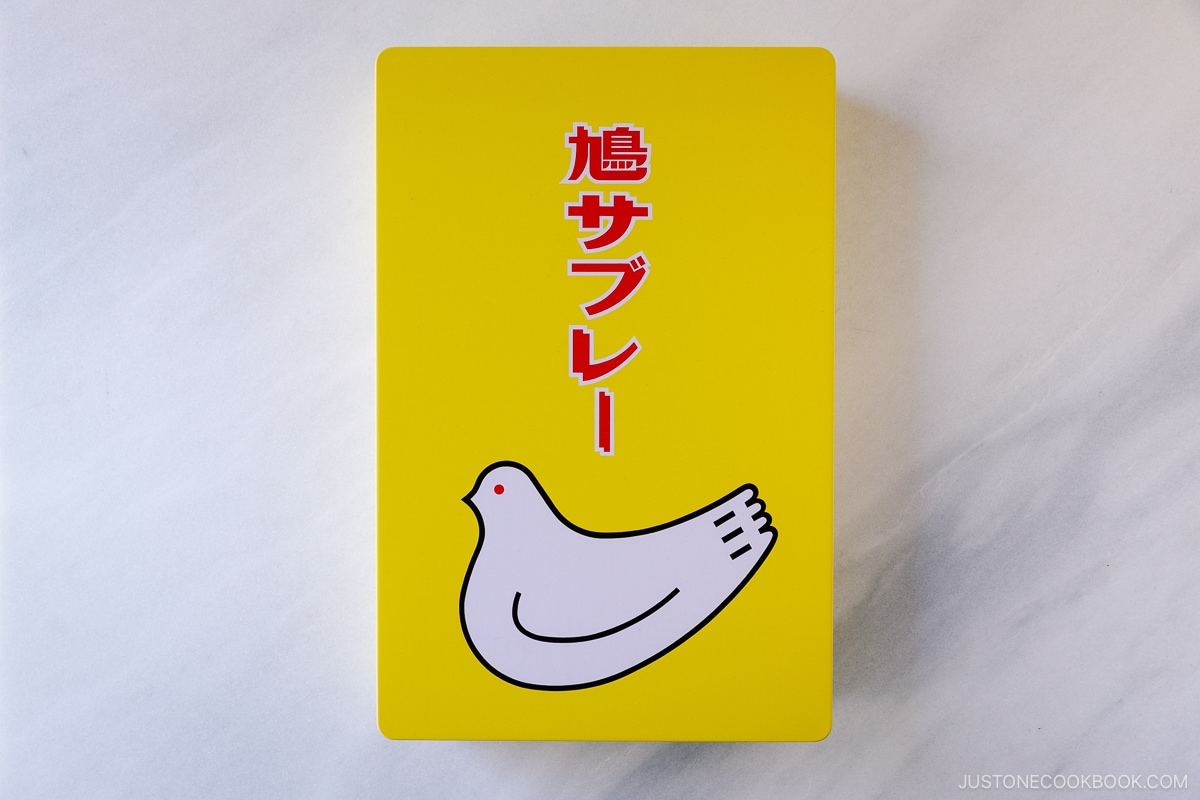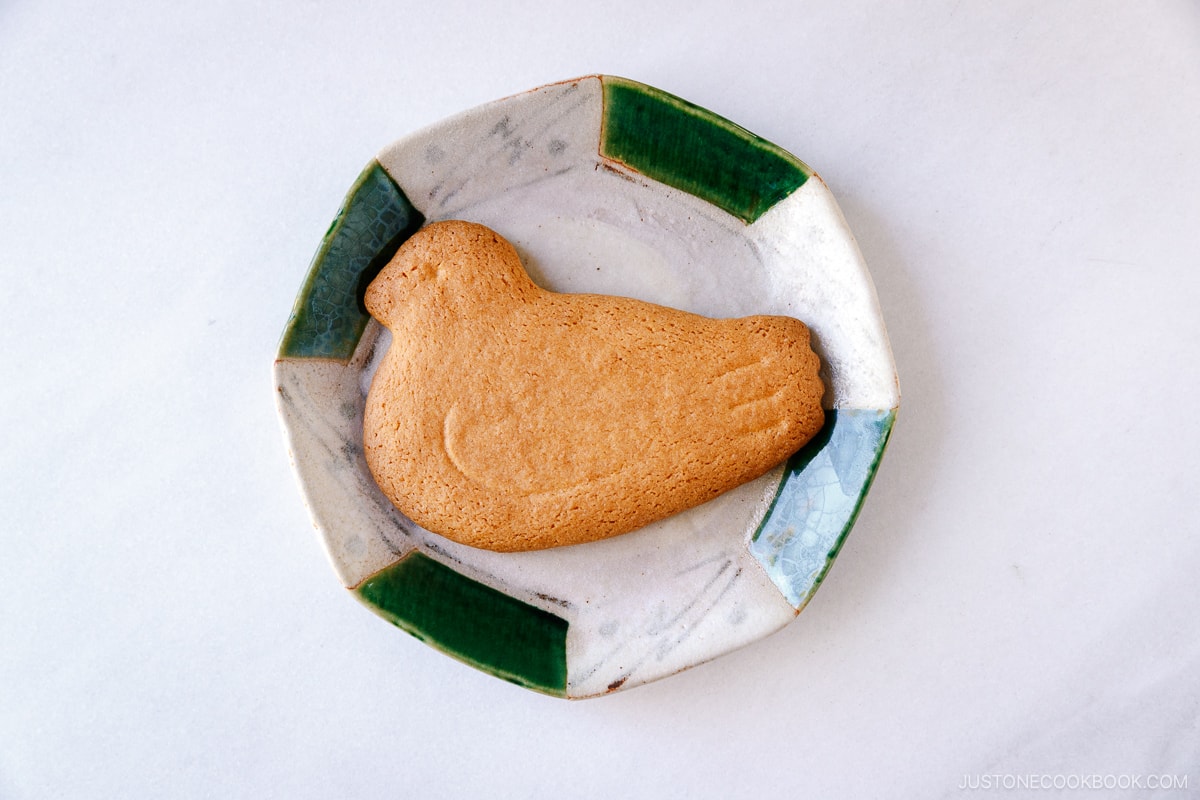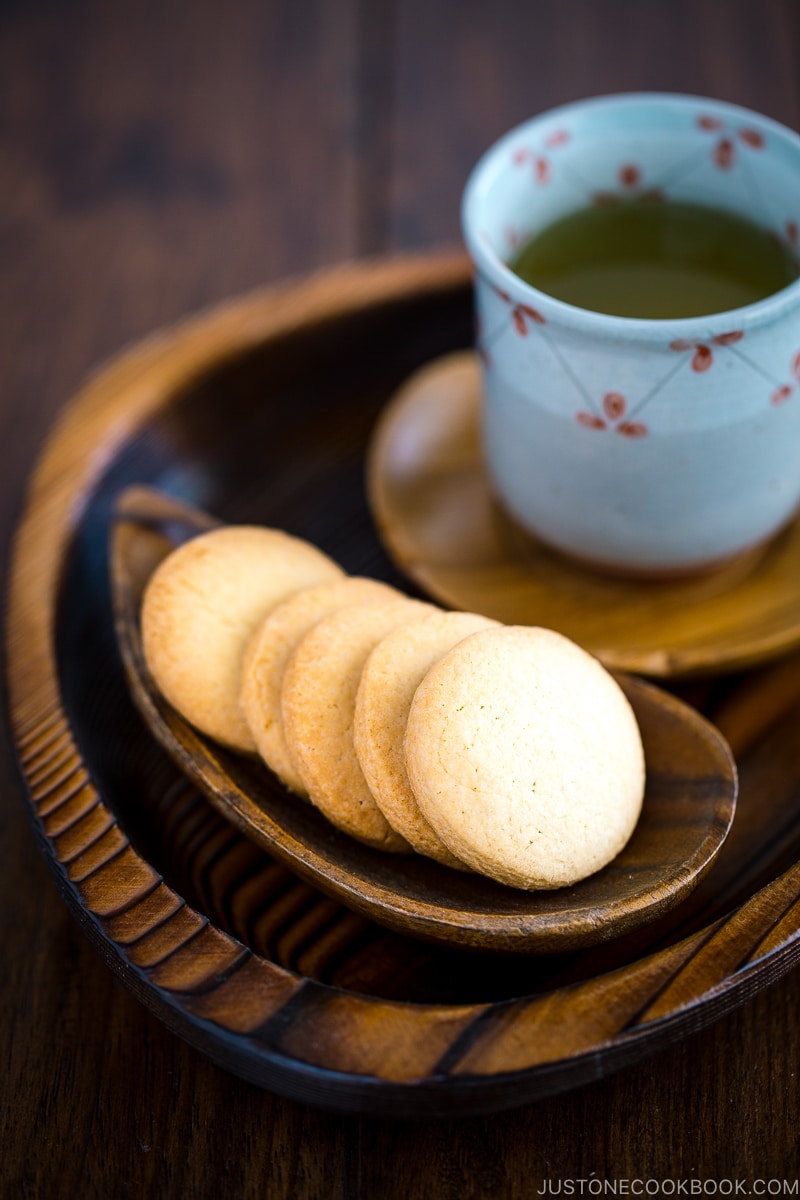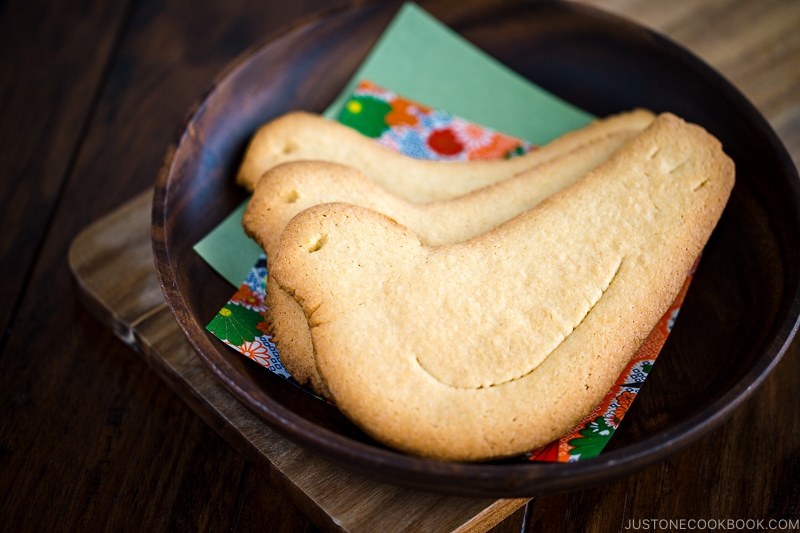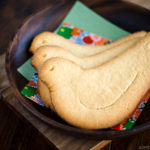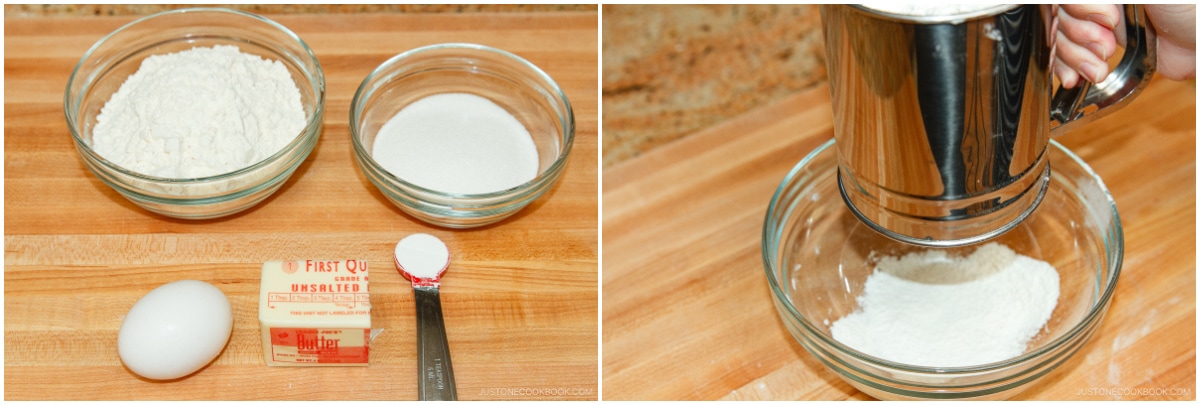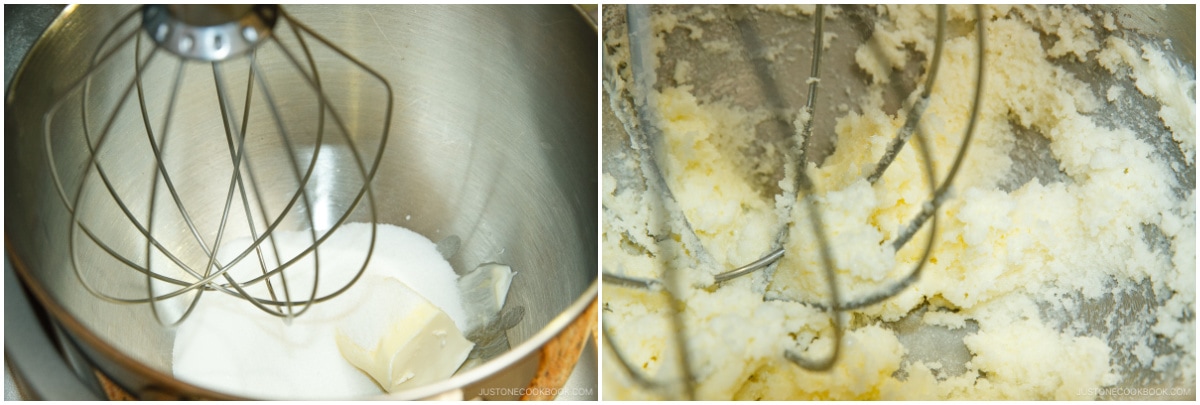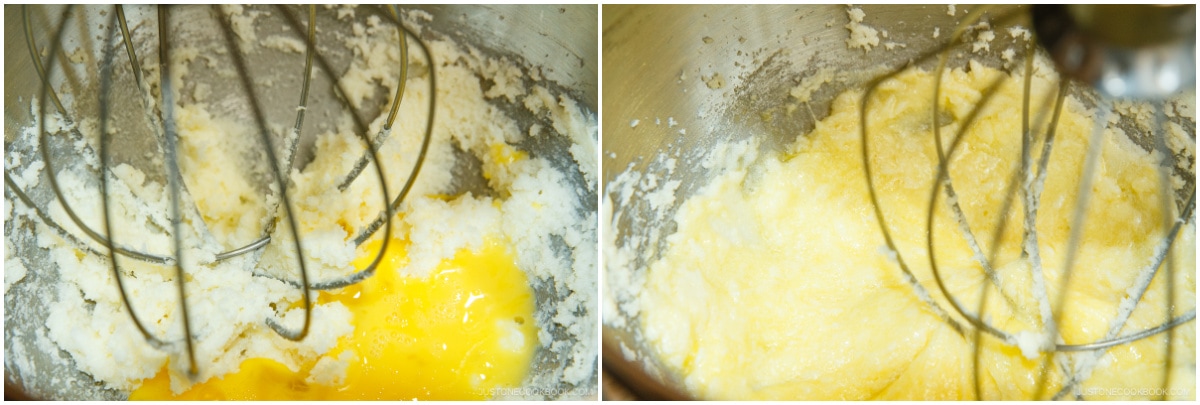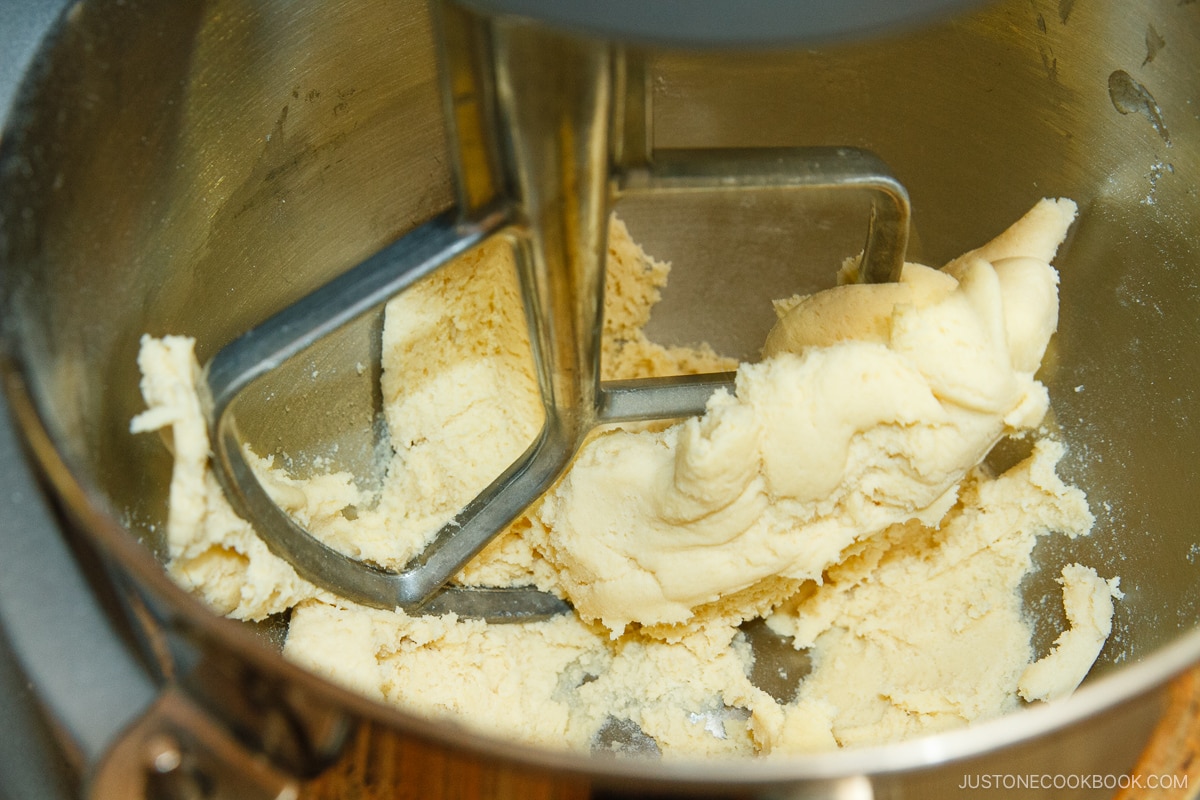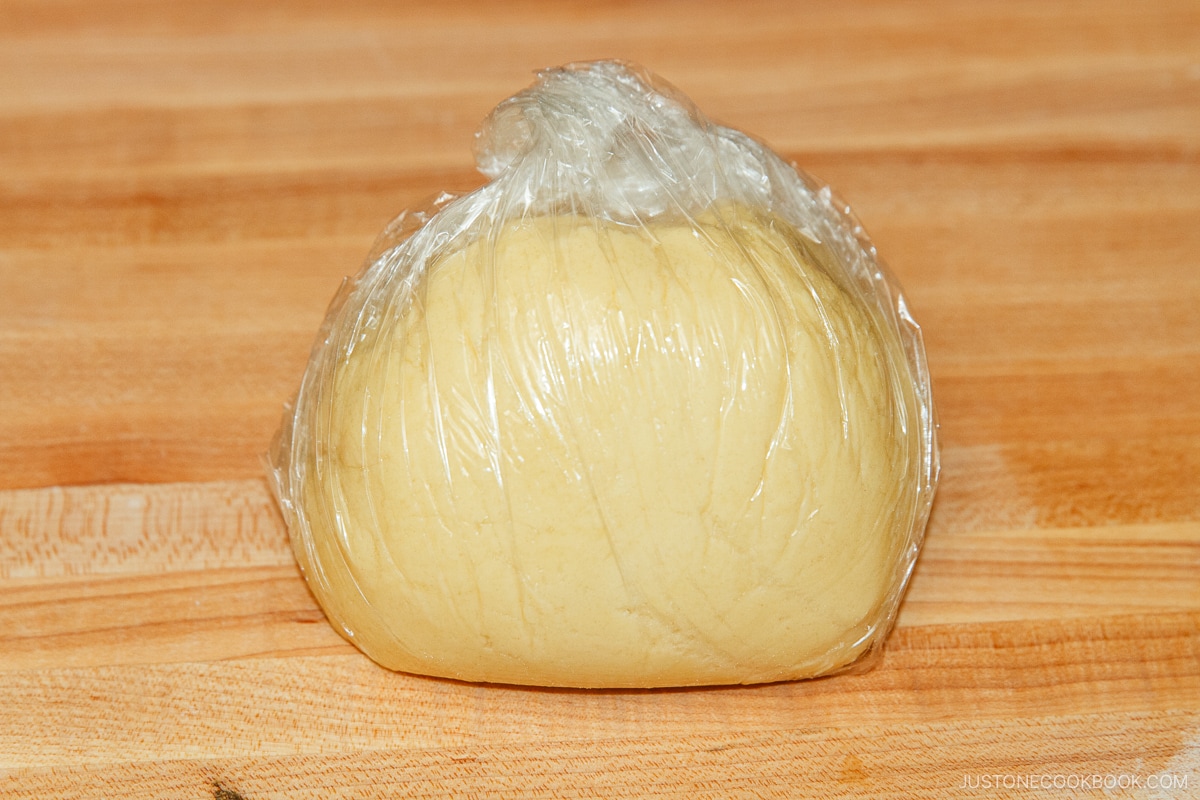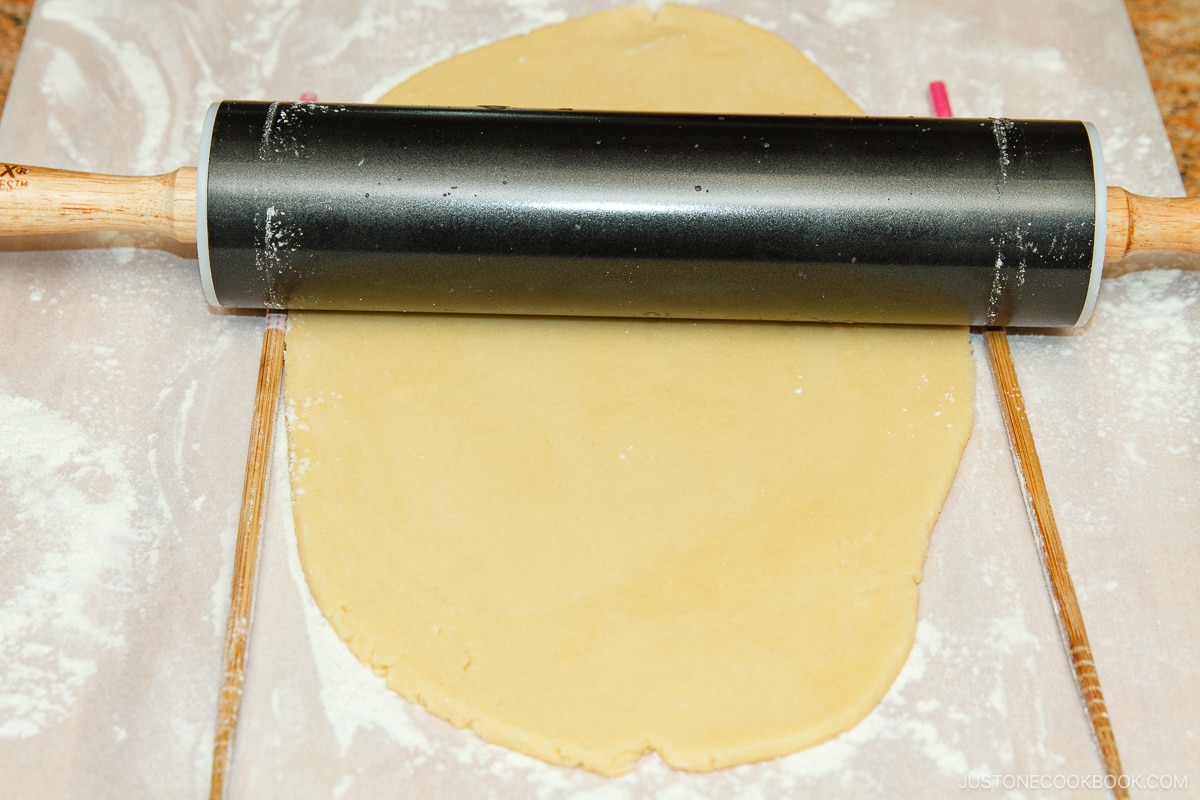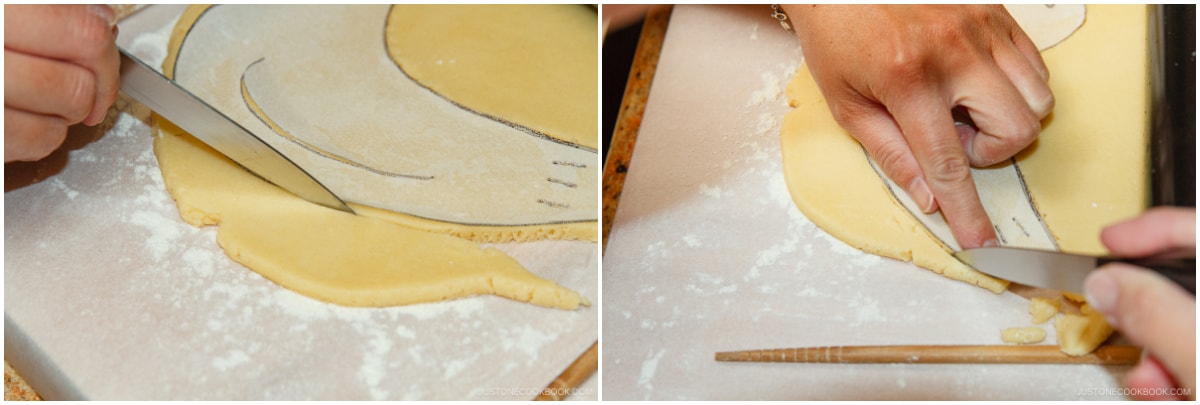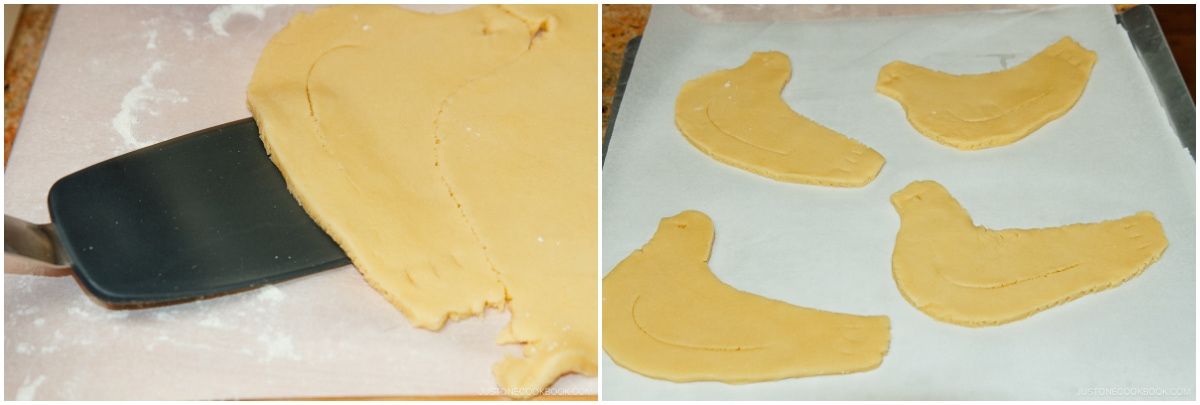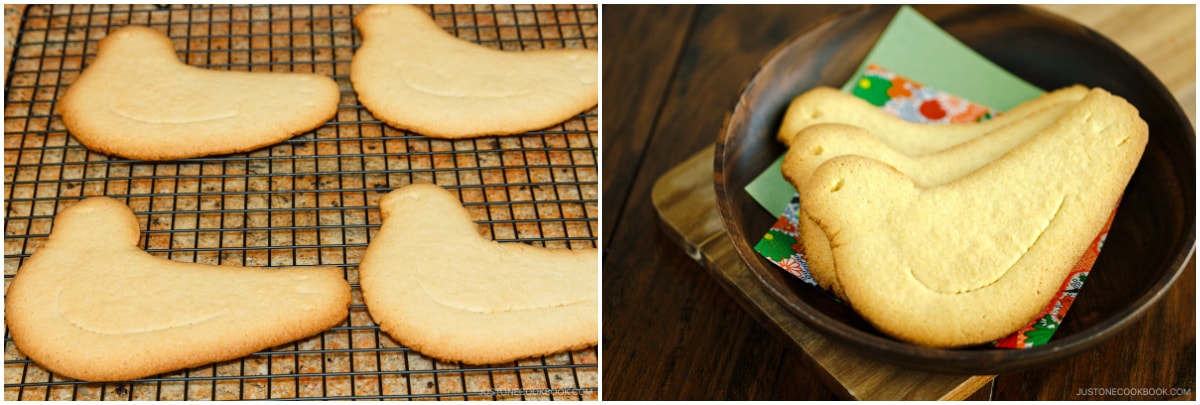Since moving from Yokohama, Japan to the San Francisco Bay Area when I was 20 years old, I get a craving occasionally for the snacks I grew up eating. Whenever my mom comes to visit me, I ask her to bring my favorite Butter Cookies called Hato Sabure (鳩サブレー) from the popular confectionery store Toshimaya. Since it’s not easy to get my hands on these delicious treats, I decided to create my own Copycat Hato Sabure recipe. I’m really happy with the way it turned out! I hope you give it a try at home for a taste of this delicious Japanese butter cookie recipe.
What is Hato Sabure?
Hato Sabure (鳩サブレー) is a brand of butter cookies sold at Toshimaya in the city of Kamakura (鎌倉) near Yokohama. These sablé cookies originated all the way back in 1887 during the Meiji period 1868-1912). Around that time, Japan started to open itself up to the world, allowing many foreign goods to come into the country. One day, a foreigner visited Toshimaya and gave a biscuit to the store’s founder. It was his first taste of a Western cookie, and he was immediately intrigued to make these butter cookies. However, butter wasn’t a common ingredient in Japan at that time, so he had to look for butter in neighborhoods where Westerners lived. Once he found butter, he tested his butter cookie recipe and eventually created his own version that became the Hato Sabure.
Why Dove-Shaped?
You may wonder why these famous Japanese butter cookies have a dove shape. Hato (鳩) means dove in Japanese, and sabure (サブレー) is the Japanese spelling for sablé, the French cookie. Sablé means “sand” in French and refers to the sandy texture of these crumbly and tender cookies. This famous confectionery store is very close to Tsurugaoka Hachiman-gu Shrine (鶴岡八幡宮), where the founder often went to pray. He was inspired to make dove-shaped cookies because children at the shrine adored doves. Also, the shrine’s name contains Japanese character number eight “八” which resembles the shape of two birds facing each other.
How I Made A Copycat Hato Sabure Recipe
I was inspired by a Japanese blog (unfortunately, the website no longer exists) where the blogger dedicates his time to making the perfect Hato Sabure! After reading his blog and comparing it with sable cookie recipes online, I came up with this simplified recipe that works very well that I’m sharing today.
Why You’ll Love This Recipe
super buttery, yet light crisp on the edges quick – only 30 minutes of chill time shape anyway you like – you can cut out the cookies with a knife using my dove-shaped pattern, use cookie cutters of your choice, or slice into rounds versatile – dip in melted chocolate or matcha chocolate and add sprinkles
Downloadable Dove-Shaped Pattern
I made a dove pattern that you can download and print. I was extremely happy that they looked and tasted just like the Hato Sabure I love!
Ingredients You’ll Need
This butter cookie recipe is made with only 5 ingredients:
all-purpose flour – weigh your ingredients with a kitchen scale for the best results; for weights, click the “Metric” button at the top of the recipe card sugar unsalted butter large egg baking powder
You can add vanilla extract if you like, but the original recipe didn’t include it.
How To Make Homemade Hato Sabure
These are delicious, and it’s fun to make especially with your kids who can help cut out the dough. These cookies stay fresh in an airtight container at room temperature for up to 1 week. You can reheat the cookies at 350ºF (180ºC) in the toaster oven (or oven) until crisp, if you wish.
5 Tips for Making Hato Sabure Cookies
1. Use room temperature butter and eggs.
It’s crucial that your eggs and butter are at room temperature so the ingredients blend more evenly and cohesively. Did you forget to take out the eggs and butter from the refrigerator? Here are two quick tricks I learned from my daughter, the home baker in my family:
Eggs: Soak the cold eggs in warm water for 10–15 minutes. Butter: Microwave 5 seconds for each long side of the stick and turn (total 20 seconds; our microwave is 1000W).
2. For even dough thickness, use chopsticks as a guide.
I place long Japanese cooking chopsticks that are about ¼ inch thick on either side of the dough ball. Using the chopsticks as a guide, I roll out the cookie dough with a rolling pin to the same height of the chopsticks. This keeps my dough an even thickness. You can see how I do it in the photo in the recipe card below.
3. Use parchment paper to make the dove pattern.
To make dove-shaped Hato Sabure cookies, print out my dove-shaped pattern. Trace it onto parchment paper, cut it out, place it on your rolled-out cookie dough, and cut around the shape with a sharp knife.
4. Use a light-colored aluminum baking sheet.
I strongly encourage this because aluminum conducts heat uniformly so your cookies and pastries brown evenly. I had success testing this recipe on an aluminized steel baking sheet as well. Do not use another type of baking sheet with a dark-colored surface. In the past, I’ve burned the bottom of my baked goods on a dark-colored carbon steel baking sheet, so I highly discourage using this kind of pan.
5. Check your oven’s actual temperature with an oven thermometer.
The actual temperature inside may differ from the display setting. Every oven is different; please adjust your setting to achieve the correct actual temperature. Also, I tested this recipe in a full-sized oven. Your baked goods may cook faster if you use a countertop (or other small) oven. Closely monitor your baking and be ready to adjust the bake time if needed.
Other Cookie Recipes You’ll Love
Miso Butter Cookies Black Sesame Cookies Matcha White Chocolate Cookies Cherry Blossom Cookies Madeleines (French Butter Cakes) Matcha Madeleines
Wish to learn more about Japanese cooking? Sign up for our free newsletter to receive cooking tips & recipe updates! And stay in touch with me on Facebook, Pinterest, YouTube, and Instagram.
